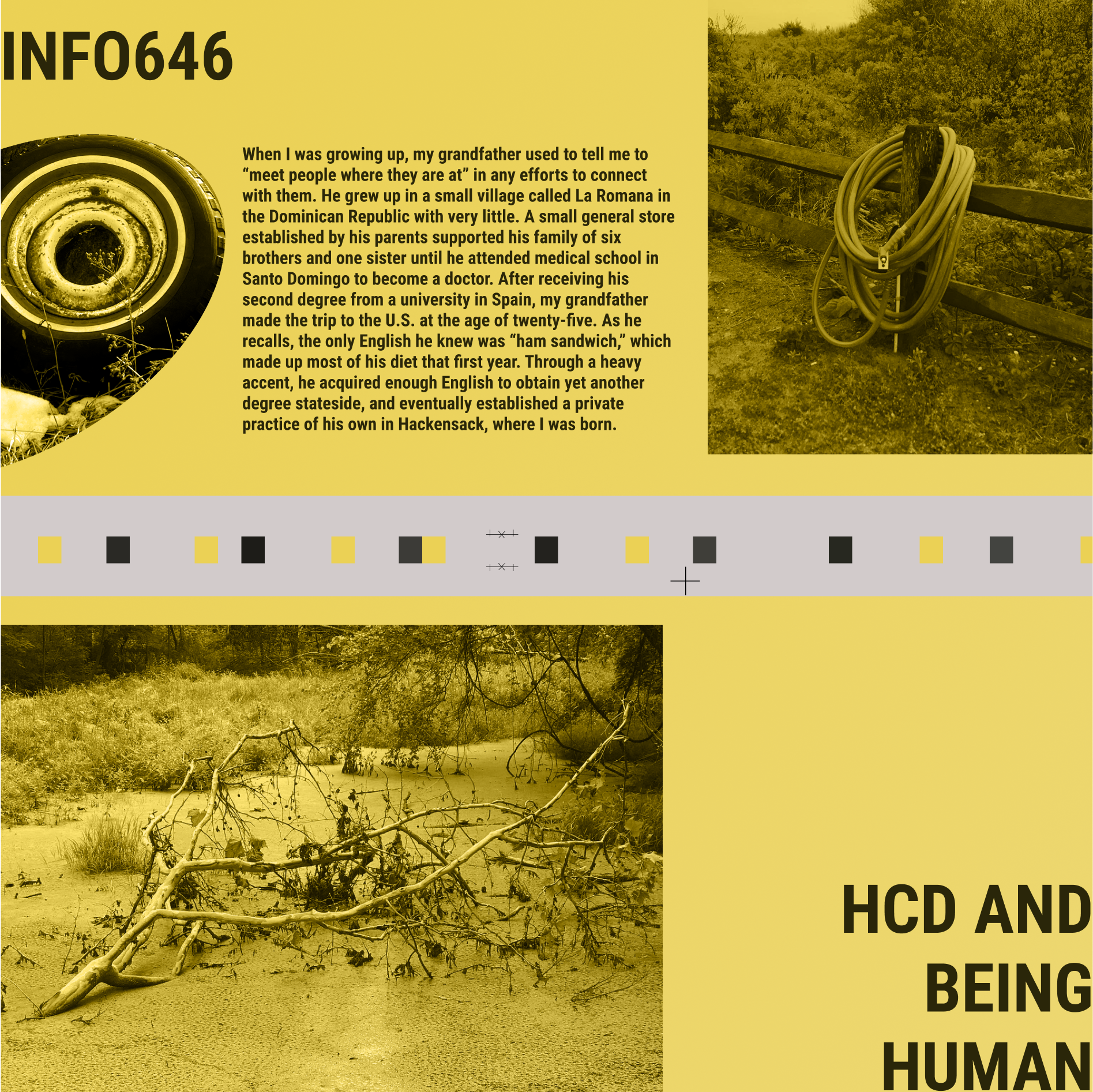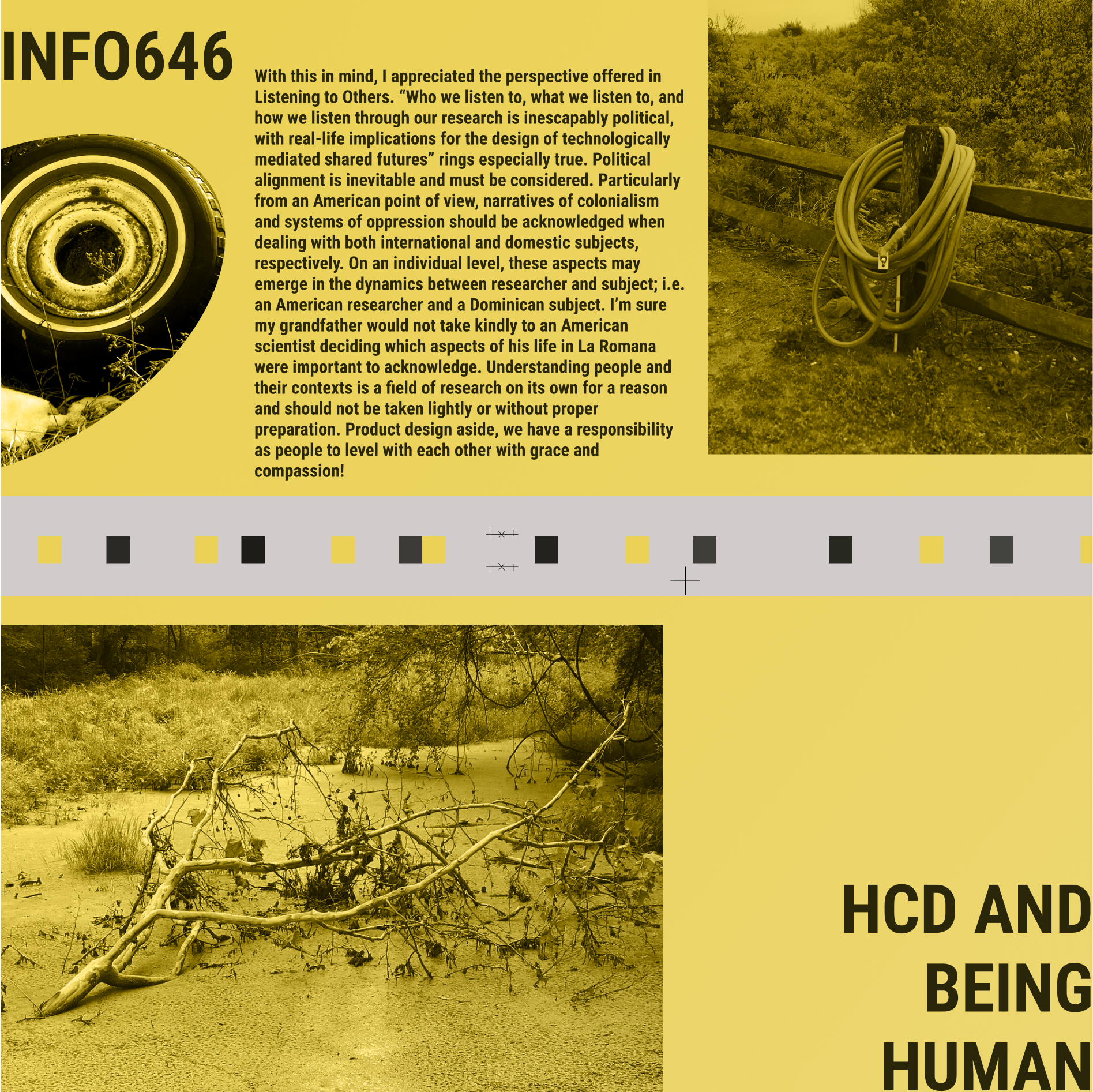Human Centered Design and Being Human
This article was produced during my third semester at Pratt Institute. We analyzed texts related to human centered design and were asked to write about the role of empathy in the design process. See the designed asset below, and read the accompanying text at the bottom of the page.



When I was growing up, my grandfather used to tell me to “meet people where they are at” in any efforts to connect with them. He grew up in a small village called La Romana in the Dominican Republic with very little. A small general store established by his parents supported his family of six brothers and one sister until he attended medical school in Santo Domingo to become a doctor. After receiving his second degree from a university in Spain, my grandfather made the trip to the U.S. at the age of twenty-five. As he recalls, the only English he knew was “ham sandwich,” which made up most of his diet that first year. Through a heavy accent, he acquired enough English to obtain yet another degree stateside, and eventually established a private practice of his own in Hackensack, where I was born.
In reading about human-centered design, I could’t help but think of my grandfather. I’ve carried his story with me throughout my life, and his advice of meeting people where they are has been one of my most steadfast guides and personal philosophies. Many of the methodologies described by HCD involve some version of my grandfather’s advice: actively listening, placing yourself in the shoes of the user, and holding space for the totality of their life experience. It seemed to me, that many of these practices emerge from simply communing with other people, often reading like a corporate approach to anthropology.
Some methods seemed more considered than others. Contextual inquiry, for example, suggests a reasonably passive role in research, simply observing the lives of users completing the tasks and encountering the problems that one is designing for. On the other hand, “walk-a-mile immersion” seems tricky. Sure, moving through the routine of a factory worker might help a researcher understand how technology plays a role. Walking that mile gets tricker, though, when the problem at hand involves certain cultural nuances and power dynamics between researcher and subject. Quantifying the parts of a person’s life that are valuable to solve problem lends itself to bias and risks overlooking aspects that the subject might otherwise feel are critical parts of their experience.
With this in mind, I appreciated the perspective offered in Listening to Others. “Who we listen to, what we listen to, and how we listen through our research is inescapably political, with real-life implications for the design of technologically mediated shared futures” rings especially true. Political alignment is inevitable and must be considered. Particularly from an American point of view, narratives of colonialism and systems of oppression should be acknowledged when dealing with both international and domestic subjects, respectively. On an individual level, these aspects may emerge in the dynamics between researcher and subject; i.e. an American researcher and a Dominican subject. I’m sure my grandfather would not take kindly to an American scientist deciding which aspects of his life in La Romana were important to acknowledge. Understanding people and their contexts is a field of research on its own for a reason and should not be taken lightly or without proper preparation. Product design aside, we have a responsibility as people to level with each other with grace and compassion!